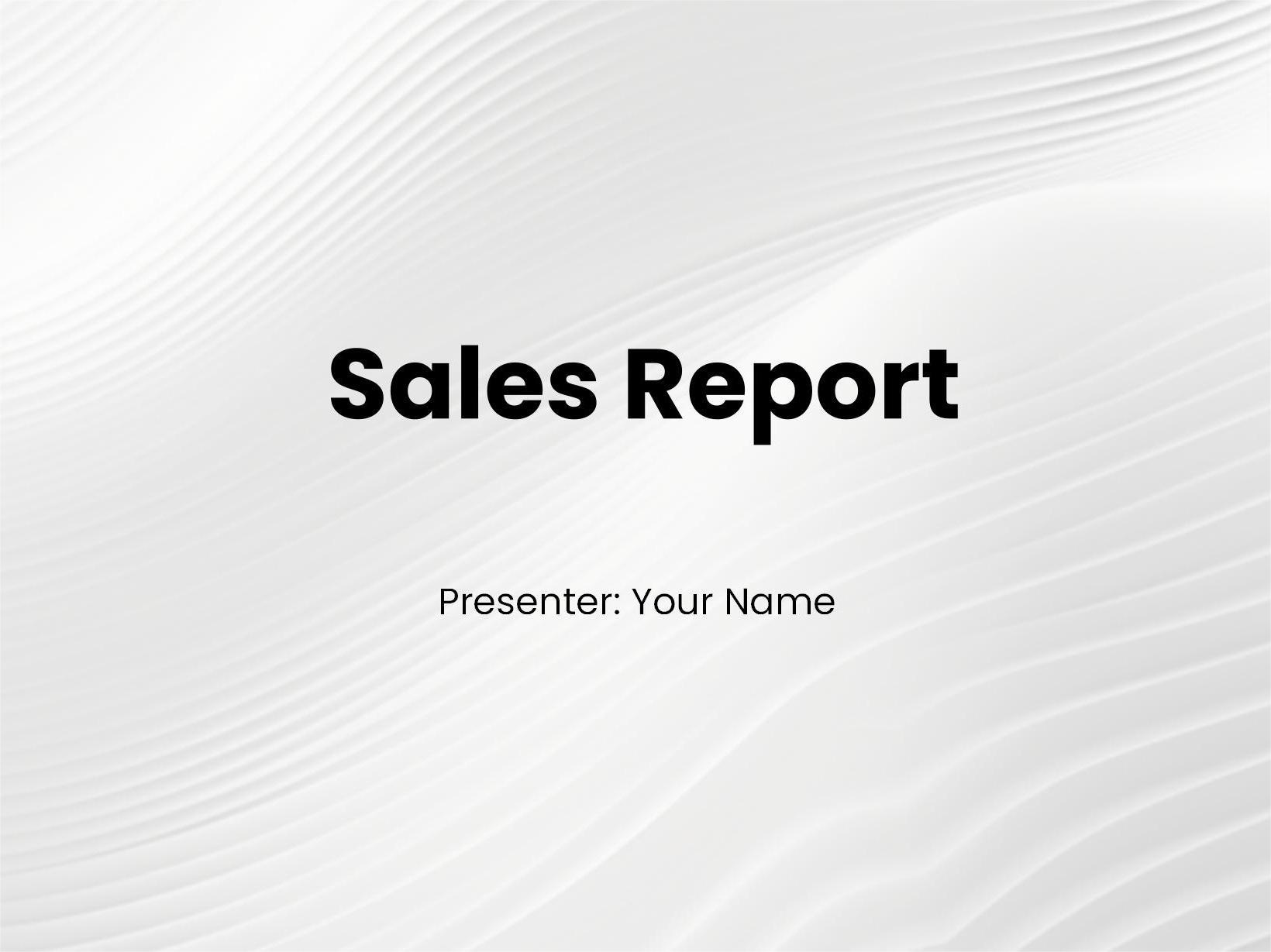PopAi: The Best AI Tools for Creating the Shroud AI Jesus Face
After dabbling with digital art for what seems like ages, finding PopAi felt like discovering a hidden gem! This tool is practically magic. A buddy of mine kept raving about how it could recreate images of famous historical figures, so I figured, why not give it a shot? The first thing I noticed was how the AI could craft an image of Jesus’ face from the Shroud of Turin with remarkable detail. Those images are not just accurate, they almost feel alive with their nuanced textures and tones. Plus, using PopAi feels as simple as pie—just throw in a few prompts and bam, you’re creating divine imagery in no time. Trusted me; I’ve tried a bunch of these tools, and PopAi truly delivers that nonchalant flair you want in religious art.
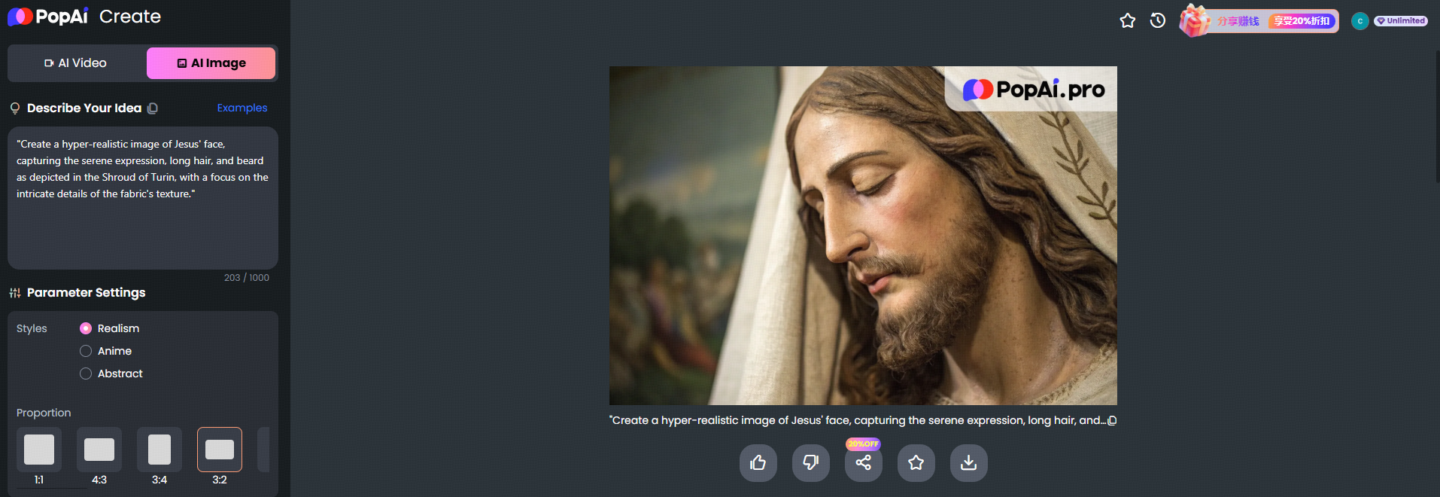
Try this great prompt and you’ll see the magic happen:
“Create a hyper-realistic image of Jesus’ face, capturing the serene expression, long hair, and beard as depicted in the Shroud of Turin, with a focus on the intricate details of the fabric’s texture.”
Incredible AI-Generated Shroud Jesus Face Examples
Let me tell you, when I first saw the AI-generated images of Jesus’ face from the Shroud, I was torn between awe and skepticism. Were these images really crafted by AI? I toyed with several iterations myself and each time, I was spellbound by the intricate details and emotive expressions. It was like each image had a soul, capturing the serene and contemplative essence of Jesus perfectly. One of my favorite moments was when I shared these creations with my friend, Lisa—her jaw literally dropped (I always knew she’d be a sucker for historical art). It’s not just about the accuracy in the beard or the eyes; it’s the unexpected depth that makes these AI creations stand out. You might think adding some personal style or flair is tough with AI, but the results can be downright astounding once you get the hang of it. With PopAi, it feels like the realm of divine art isn’t just confined to ancient methods anymore.
a lifelike portrait of Jesus inspired by the Shroud of Turin
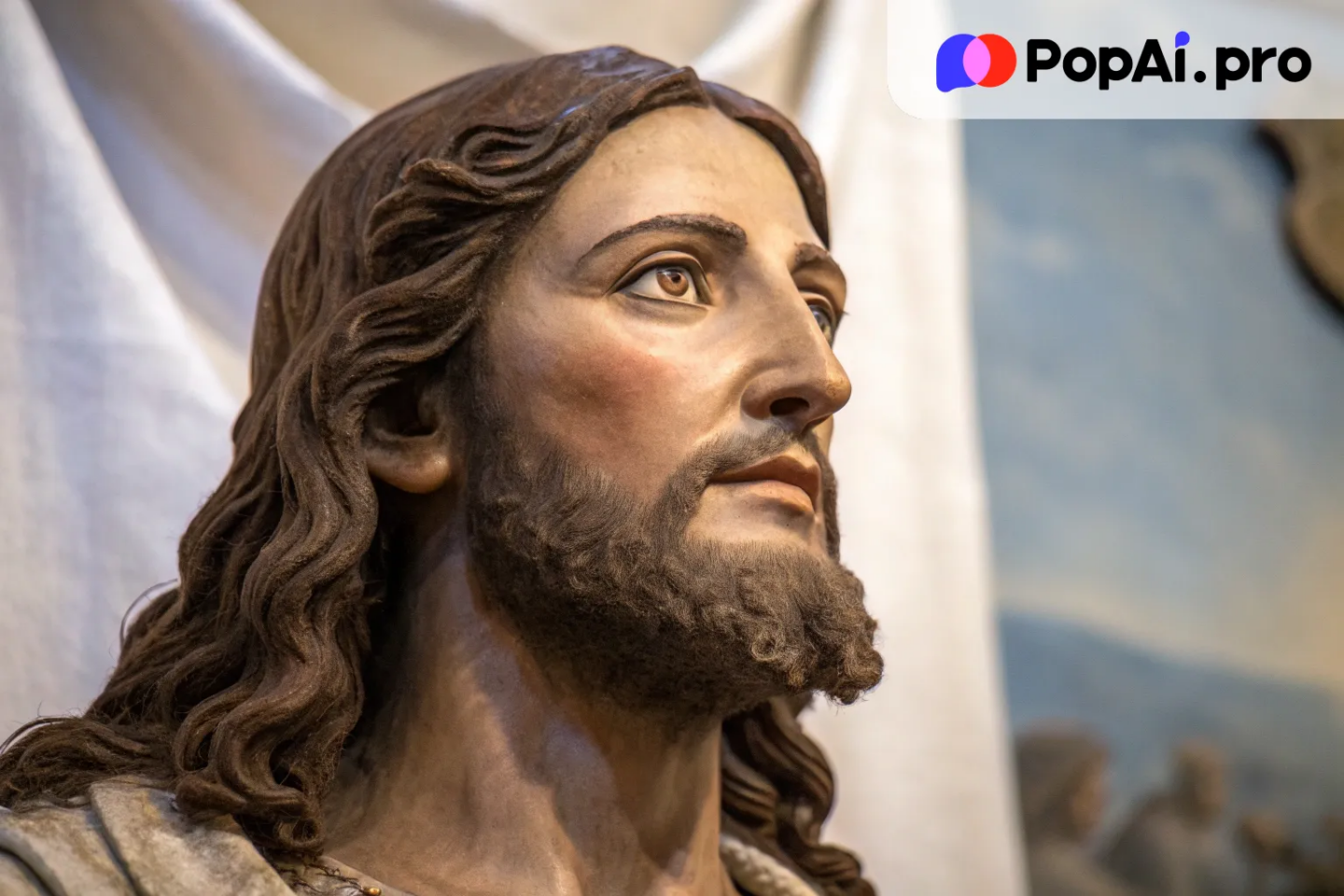
Jesus’ face using the Shroud of Turin as a reference
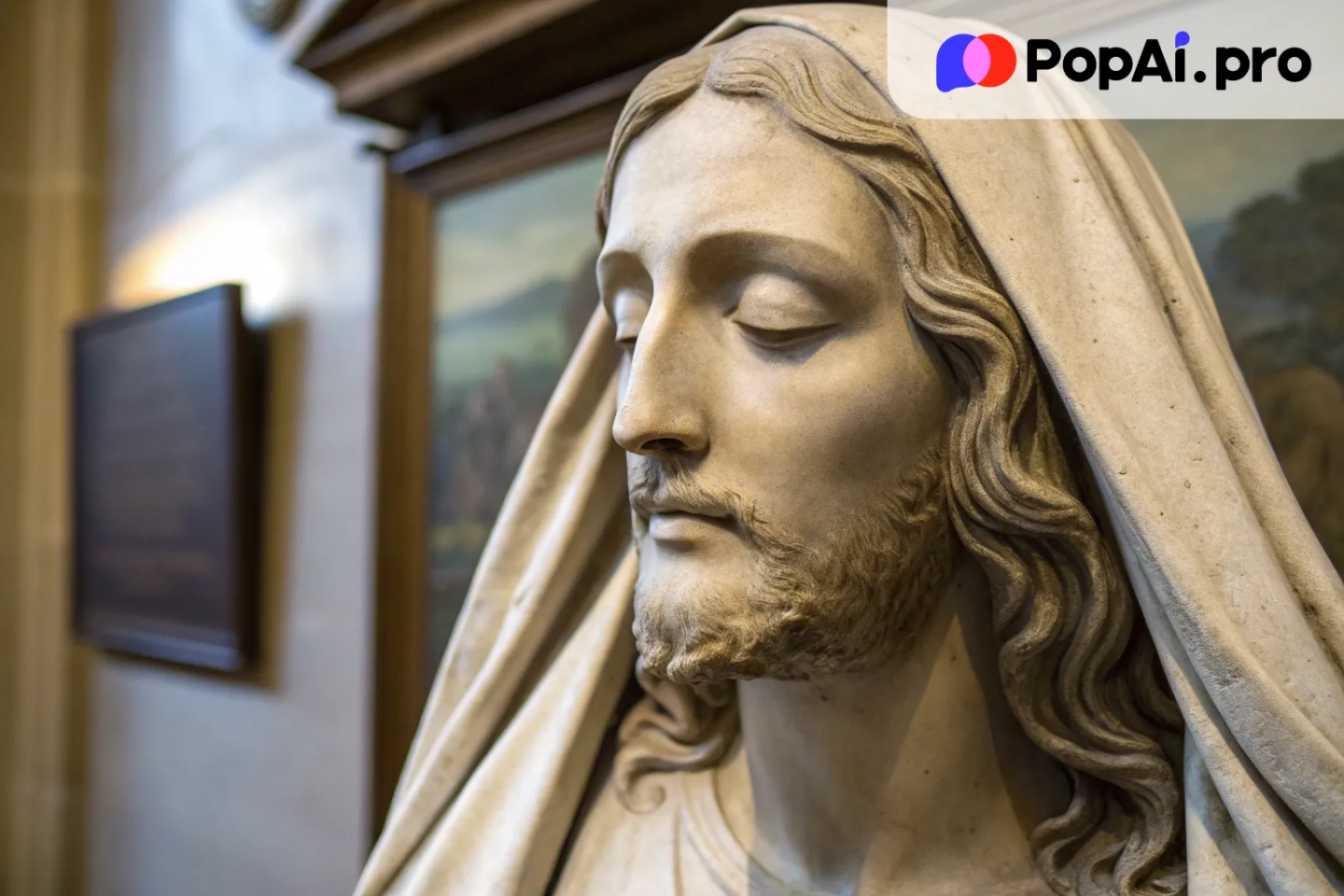
Produce an AI image of Jesus’ face from the Shroud of Turin
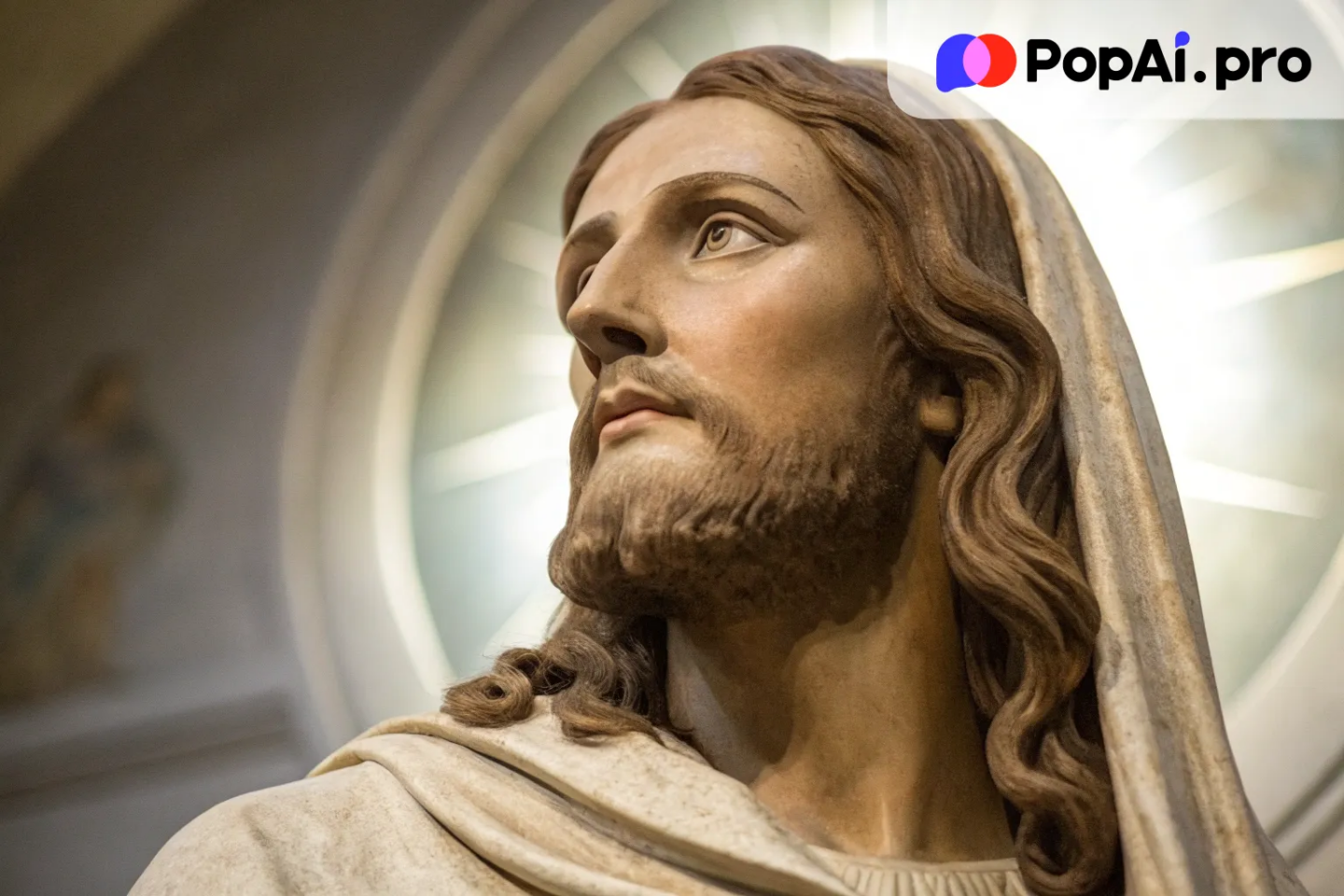
Step-by-Step Guide to Using AI to Image the Shroud AI Jesus Face
Okay, so you’re pumped to create your own AI-generated image of Jesus’ face from the Shroud of Turin using PopAi. Awesome! Here’s a simple guide to get you started.
1. Visit PopAi and create an account
2. Create a prompt
You don’t need to be a prompt master, just tell our AI what kind of prompt you need and it will generate it automatically.
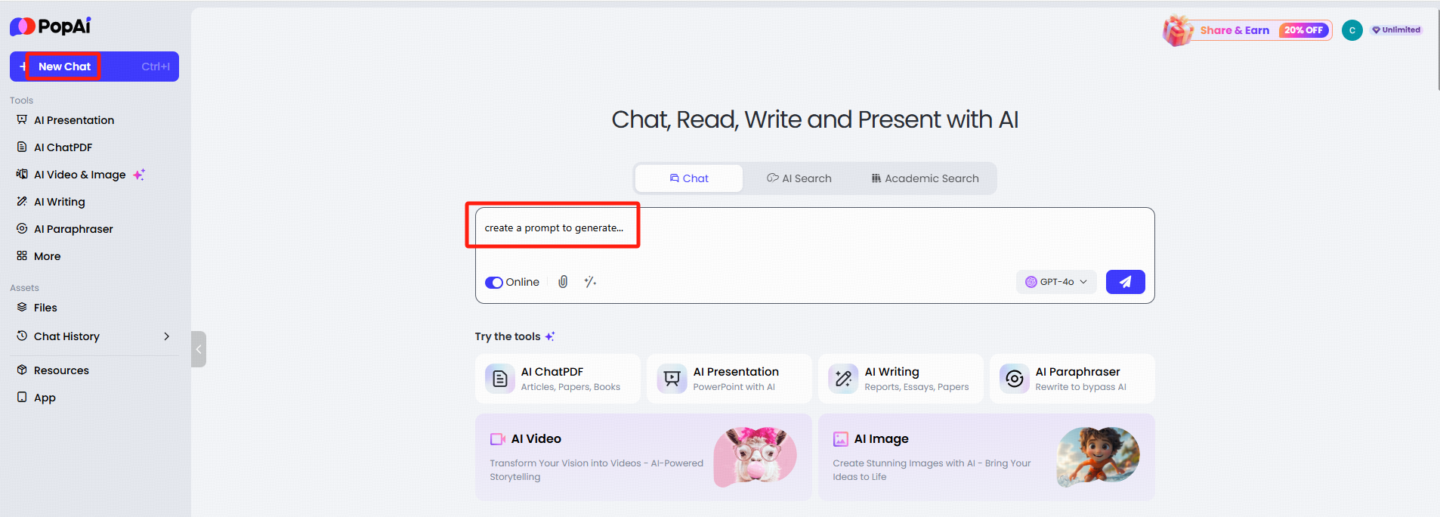
3. Paste the prompt into the input box of ai image generator
you can get the picture you want.
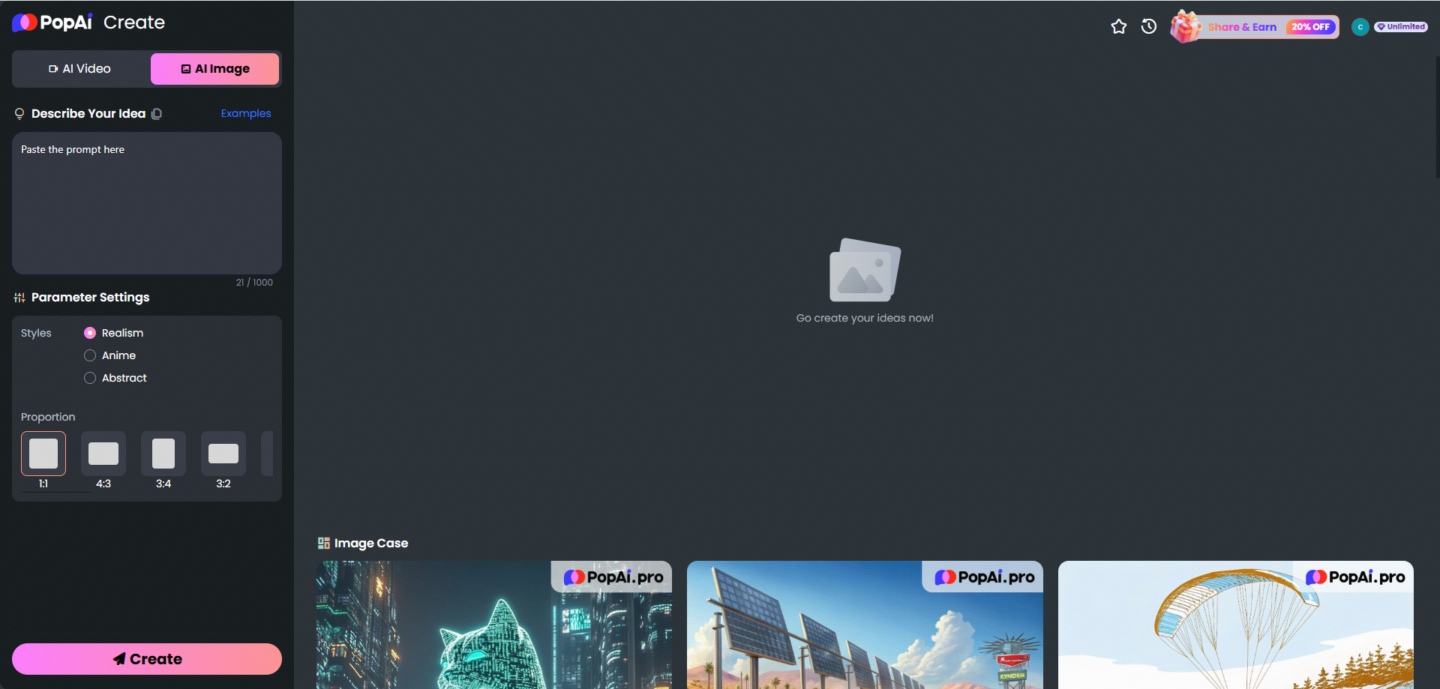
Tips for Crafting Effective Prompts for AI Image the Shroud AI Jesus Face
So, when it comes to crafting prompts for creating your image of Jesus’ face, you really want to be specific. Generic prompts will get you generic results, and nobody wants that! Instead of saying “Jesus’ face,” try something like, “Jesus with a compassionate gaze from the Shroud of Turin.” The more details you provide, the better the AI can capture the essence you’re aiming for.
One trick I’ve learned is to use adjectives that set the scene. Words like “serene,” “reverent,” or “divine” can shift the tone of the image dramatically. This little hack can save you a ton of trial and error. Also, don’t be afraid to play around with different historical references. Saying something like “Jesus’ face as depicted in Renaissance art” can guide the AI to pick up on those period-specific details.
Another helpful tip is to adjust your prompt as you go. Don’t get married to your first idea. For example, if your first try feels off, tweak a word or two. Change “compassionate” to “contemplative” or swap “historical” with “iconic.” It’s like tweaking a recipe; a small change can lead to a masterpiece.
Here’s a fun anecdote: I once tried a prompt like “Jesus amidst a golden light,” thinking it would be amazing. What I got was a bit too angelic for my taste—think more glowing halo and less Shroud of Turin. After changing “golden light” to “soft illumination,” the result was more in line with the authentic look I was chasing.
So go on, experiment with different phrases, play with semantics, and remember, the key lies in the details. Soon enough, you’ll be crafting an image of Jesus’ face that not only looks realistic but feels like it tells a story.
Elevate Your Religious and Artistic Projects with AI-Generated Jesus Faces
Alright, let’s get real—if you’re like me, blending faith and creativity has always been a thrilling endeavor. The ability to generate a mesmerizing image of Jesus’ face through AI isn’t just groundbreaking; it offers a unique way to infuse spiritual symbolism into your art. Whether you’re working on a religious project for your local church or aiming to add a touch of piety to your personal artworks, AI-generated creations can elevate your projects to a divine level.
Imagine being able to adjust every subtle feature with precision. You’re not just limited to traditional interpretations of Jesus’ visage; instead, the world’s your oyster here. You can draw inspiration from different eras, cultures, and artistic movements, giving your image a narrative that’s both personal and profound. Dabbling with AI not only brings accuracy but also offers a canvas as limitless as your imagination.
But hey, don’t just stop at creating the image. How about incorporating it into a mosaic or a prayer card? I once plastered an AI-generated Jesus face on a mural at our community hall, and the way it resonated with everyone there was something else. It was like witnessing a modern-day Michelangelo come alive in the most unexpected way. The whispers of appreciation were all the validation I needed to realize the power these AI creations hold.
And while we’re talking about personal projects, it’s crucial to remember some ethical considerations too. Because with great power comes—you guessed it—great responsibility. Ensure you’re respecting the sacred nature of your subjects and using these images in a way that aligns with your values. It’s like driving a car; you wouldn’t go racing through a school zone, right? So always approach your religious imagery with the respect and thoughtfulness it deserves.
How AI Image the Shroud AI Jesus Face is Revolutionizing Religious Imagery
Let’s dive into the cool ways AI is shaking up the world of religious imagery by transforming how we view the face of Jesus from the Shroud! For generations, religious art has been tied to specific styles and interpretations—often rooted in the visions of a select few historical artists. But now, AI-generated images bring a whole new level of creativity and authenticity that weren’t possible before. And, frankly, it’s exciting!
Have you ever noticed how traditional religious art sometimes feels a bit repetitive? I mean, it’s beautiful, don’t get me wrong, but it can start to blend together if you’ve seen one too many Renaissance-era canvases. With AI, you’re not just limited to the gallery of the past. This technology opens the door to blending historic authenticity with innovative tweaks—a veritable art renaissance in itself! Imagine creating a rich tapestry of history where ancient meets modern in a single, captivating image of His visage. How rad is that?
Moreover, AI isn’t just supplying numerous fresh aesthetics but is promoting personal engagement with these transcendental themes. You’re not only viewing an artist’s interpretation; you’re shaping it. This interactivity and accessibility democratize art in ways past creators probably didn’t even imagine. More people can now explore their spiritual interpretations while preserving the significance of traditional views as they curate the image of Jesus’ face that resonates with them. It’s like everyone is becoming a co-creator in their faith journey, armed with digital paintbrushes and tenacity.
And here’s something pretty astonishing: AI-generated faces of Jesus could serve educational purposes too. Schools and religious institutions can integrate these images into teachings, offering diverse perspectives on the formative iconography of Christianity throughout the centuries. This isn’t just tech for art lovers; it’s a resource for scholars looking to deepen cultural and theological understanding.
Of course, it would be remiss not to acknowledge how these shifts bring into focus ethical dialogues. Not every user will tread thoughtfully, and the sacredness of this subject means AI-generated images must be crafted with the utmost respect and consideration. Think of it as navigating a delicate balance—melding reverence with innovation while maintaining the underlying spiritual essence.
Frequently Asked Questions About AI Image the Shroud AI Jesus Face
You got questions? We’ve got answers! When it comes to using AI for creating Jesus’ face from the Shroud of Turin, there are plenty of “what ifs” and “how-tos” floating around. Here are some FAQs to help simplify the process:
What exactly is AI-generated imagery of the Shroud?
In simple terms, AI-generated imagery uses algorithms to create visual representations based on input data and prompts. With the Shroud AI Jesus Face, the technology analyzes known historical images, like the Shroud of Turin, to produce an interpretation of Jesus’ face. It’s like having your own creative assistant who knows a thing or two about art and history!
How accurate are these images?
Ah, the million-dollar question. The accuracy largely depends on the detail and clarity of your prompts. With the right instructions, AI can render images that are surprisingly precise, capturing intricate facial features. However, remember that these are artistic interpretations, not exact duplicates.
Can AI-generated images be customized?
Absolutely! That’s one of the biggest perks. You can tailor the AI’s style, from ancient depictions to modern aesthetics. Add your personal flair by playing with colors, lighting, and expressions. You’ll even be able to incorporate thematic elements if you’re up for a creative challenge.
Is it ethical to use AI for religious imagery?
Now there’s a thoughtful query. As with any technology, it’s important to tread cautiously when wading into sacred waters. Ensure that your use aligns with personal and community values. Respect the deep spiritual significance while exploring fresh, creative avenues.
How do I get started with the right AI tool?
Feeling eager to dive in? Start by picking a reputable tool like PopAi for an easy entry into the world of AI art. Familiarize yourself with its features and play around with prompts. With a little practice, you’ll be crafting art that preserves traditional reverence while embracing new-age innovation.
Can images created be used for commercial projects?
Short answer: often, yes, but always check the terms and conditions. Many AI platforms permit commercial use, but it’s crucial to read their guidelines thoroughly to avoid any hiccups. When in doubt, seek permission to smoothen any potential creases.
Alrighty then, these FAQs should light your path as you embark on transforming the divine through AI magic. As always, remember—there’s no true manual for creativity except your own curiosity and respect for the art.
Conclusion
So there you have it, folks! With the ability to create your own images of Jesus’ face using AI, you’re equipped with both a creative tool and a potentially transformative experience. As I’ve shared my journey, from initially being curious to diving headfirst into PopAi’s world of digital art, I hope it’s inspired you to try it for yourself. Remember, the field of AI-generated imagery is not just an artistic endeavor, but a journey into understanding and interpreting historical and spiritual narratives in novel ways.
Go ahead, take the plunge into this awesome tech, experiment, and share your unique creations with the world! Whether you’re crafting art for personal reflection, educational purposes, or community projects, these AI-assisted images hold the potential to engage and inspire in ways we’re only just beginning to explore. And if you do decide to take this path, feel free to share your experiences or even your own tips in the comments! After all, the beauty of sharing is in learning together.
